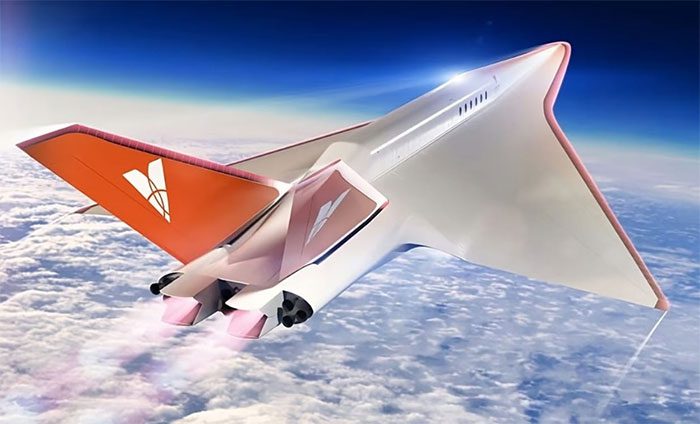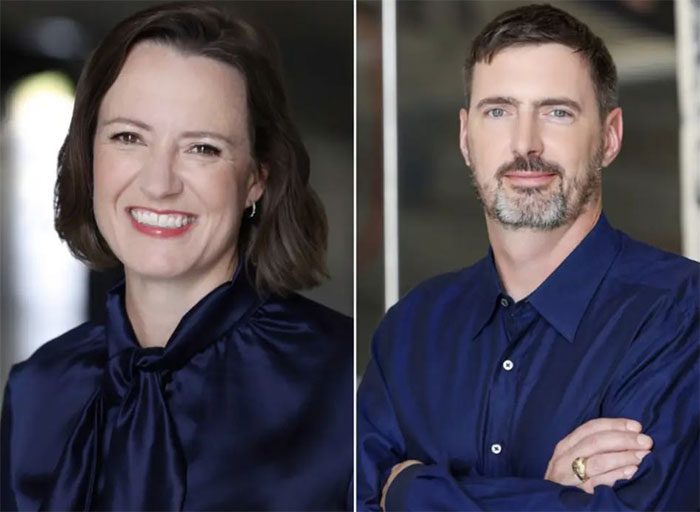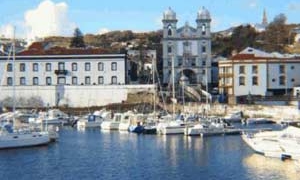The supersonic passenger aircraft developed by Venus Aerospace is designed to travel at 8,000 km/h and soar to an altitude of 52,000 meters using rocket engines.
The last time humanity experienced travel at supersonic speeds was thanks to the legendary Concorde, which operated from 1973 to 2003. Equipped with four powerful engines, this supersonic aircraft could complete the journey from New York to London (nearly 6,000 km) in less than four hours, a remarkable feat for its time.

Sketch of the Mach 9 Stargazer aircraft. (Photo: Venus Aerospace).
However, the high costs and risks associated with such aircraft forced airlines to retire the Concorde after 30 years of service. Although no manufacturer has been able to replicate the glory days of the Concorde, they are tirelessly striving towards that goal.
Boom Supersonic, based in Denver, USA, is leading the field with its Overture aircraft, which is faster than the speed of sound. Boom Supersonic has received over 100 orders from United Airlines, Japan Airlines, and American Airlines.
Meanwhile, several ambitious engineers aim to create even faster aircraft, including the European startup Destinus, Hermeus in Georgia, and Venus Aerospace in the United States. All are developing supersonic airplanes.
Notably, Venus Aerospace, founded in 2020, is boldly pursuing a grand plan for air travel at Mach 9, or nine times the speed of sound.
The two co-founders of the company, CEO Sassie Duggleby and CTO Andrew Duggleby, revealed at the Paris Air Show in June that their supersonic aircraft will be named “Stargazer.”

Couple Sassie and Andrew Duggleby, owners of Venus Aerospace. (Photo: Insider).
According to Venus, their supersonic passenger aircraft is being developed to achieve Mach 9 speeds, equivalent to approximately 8,000 km/h. This means Stargazer could fly from San Francisco to Tokyo (8,200 km) in just one hour—over 11 times faster than current flight times.
In comparison, the Concorde flew at approximately Mach 2, while the Overture is being built to cruise at Mach 1.7, and both Hermeus and Destinus are designing supersonic aircraft that can reach Mach 5.
Director Andrew Duggleby is confident that they will achieve the capability to fly around the world in one hour, thanks to a combination of jet engines and rocket engines.
He explained that Stargazer will take off using traditional jet engines. Once it is out of the city center, it will switch to rocket engines to climb to an altitude of 52,000 meters and reach supersonic speeds.
This incredible altitude is four times higher than that of conventional jet aircraft. At such heights, passengers will be able to see the curvature of the Earth along with the vast night sky of the universe.
The two founders of Venus Aerospace expect the Stargazer aircraft to accommodate up to 12 passengers. They hope that ticket prices will be comparable to first-class cabins on other commercial airlines. However, other experts believe that tickets for the supersonic aircraft could cost two to five times more than regular flight tickets.
Notably, a typical one-way ticket on the Concorde cost $6,000 at the end of the 1990s. The most frequent Concorde flyer, Fred Finn, flew on the supersonic aircraft 718 times and spent over $2.5 million (equivalent to about $4.4 million today) before the aircraft was retired in 2003.
Moreover, the ambitious Stargazer project poses a significant challenge and requires Venus to build on proven aviation technology achievements, as well as develop new technologies, such as the world’s first “liquid-fueled rotating detonation rocket engine”, also known as RDRE.
Director Andrew Duggleby stated that RDRE generates higher temperatures and pressures than traditional rocket engines because it burns faster, producing more effective thrust while using less fuel.
Last October, Venus became the first company in the world to design “liquid fuel that can be stored at room temperature” for use in RDRE. “We now have both the technical knowledge and capabilities to fully advance to the next steps in development and flight testing,” Andrew stated at that time.


















































